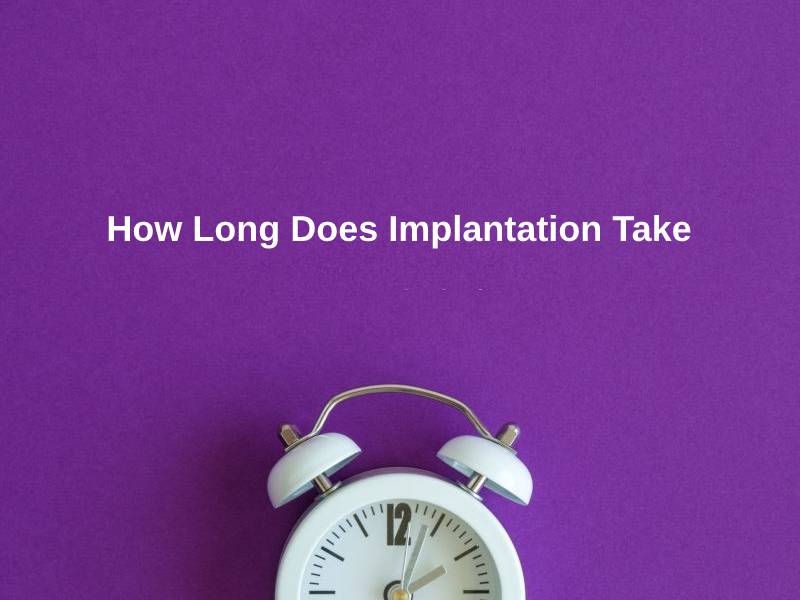Exact Answer: 6 to 12 days after ovulation
The implantation takes place between 6 and 12 days after ovulation, between 8 and 9 days after conception. The exact date of implantation can therefore depend on when you ovulated and whether conception occurred early or late in the ovulation window.

How Long Does Implantation Take?
| Ovulation and Fertilization | Implantation |
| Day 14 | Day 20 to 24 |
| Day 16 | Day 22 to 26 |
| Day 18 | Day 24 to 28 |
Implantation occurs when a fertilized egg that divides, multiplies, and develops into a group of cells called a blastocyst attaches to the uterine wall six to ten days after ovulation. It occurs when a fertilized egg cell penetrates the lining of the uterus and begins to grow, depends on the total length of the cycle, which is not necessarily the same for all women.
Ovulation occurs 14 days before menstruation. An egg releases from either the left or right ovary and then lives for about 24 hours. If the egg does not fertilize, the lining of the uterus sheds.
However, it does not mean that one needs to have sexual intercourse at the time of ovulation because sperms can live in the female body for four to seven days and encounter an egg that enters the uterus through the fallopian tube. The egg then makes its remaining way to the uterus, a journey that takes a few to several days. The implantation itself takes place between six and ten days after the fertilization of the egg cell.
If implantation does not occur, the uterine lining will peel off in the monthly period. It is a disappointment when someone tries to get pregnant but a reminder that the body is most likely preparing for it. But when it comes to implantation, the hormones do their job of helping the placenta and embryo develop and holding the uterine lining in place, and thus resulting in pregnancy.
The absence of symptoms does not mean that someone is not pregnant. Remember that most women have no signs of conception or implantation but are still pregnant. However, some women show signs of implantation.
Why Does Implantation Take That Long?
After fertilization and the onset of embryonic development in the fallopian tube, regardless of the species, embryos enter the uterus and develop to the blastocyst stage before implantation begins. In mares, the unfertilized eggs remain in the fallopian tube and never get into the uterus, possibly due to failure.
In all sub-primate species, embryonic development fails before or in the early stage of the blastocyst if restricted to the oviductal environment. It might be due to the lack of stimulation by one or more uterine factors or, presence of the factor, which is preventing embryonic development. Only in primates can a pregnancy be established and sustained in the fallopian tube until the fetus dies or ruptures through the fallopian tube wall to result in abdominal pregnancy.
The implantation can be non-invasive (central) or invasive (interstitial or eccentric), depending on whether the trophectoderm penetrates the stroma through uterine LE / sGE.Implantation in pets is tedious and superficial, and the trophectoderm of the concept only adheres to the uterus LE / sGE. The extended pre-implantation period allows for the migration of spherical structures along with blastocysts.
Later, they transition from spherical to tubular and filamentous concepts. That occurs before the apposition and fixation phase of the implantation pregnancy. In the pre-adhesion phase, structures that differentiated from trophectoderm to the secretion of an antiluteolytic or luteotropic pregnancy are a detection signal to maintain the functional corpus luteum.
Conclusion
In conclusion, implantation is a critical step in establishing pregnancy, requires molecular and cellular events that result in healthy uterine growth and differentiation, adhesion, invasion, and placental blastocyst formation. Successful implantation requires a receptive endometrium, a functional embryo in the blastocyst stage, and a timed dialogue between maternal and embryonic tissue.
Also, in addition to the critical role demonstrated by the sex steroids, the complexity of embryo implantation and placentation is illustrated by the number of cytokines and growth factors with a proven role in these processes.